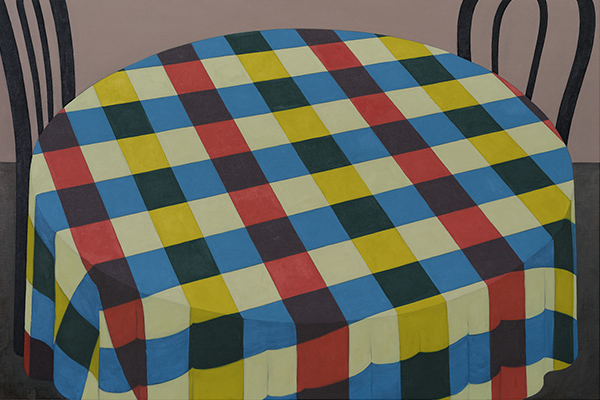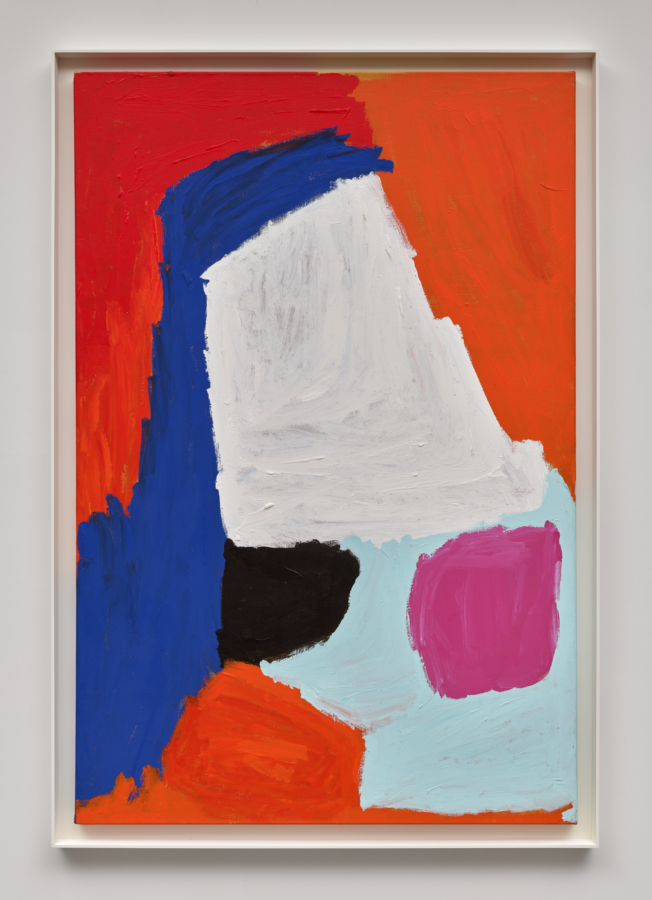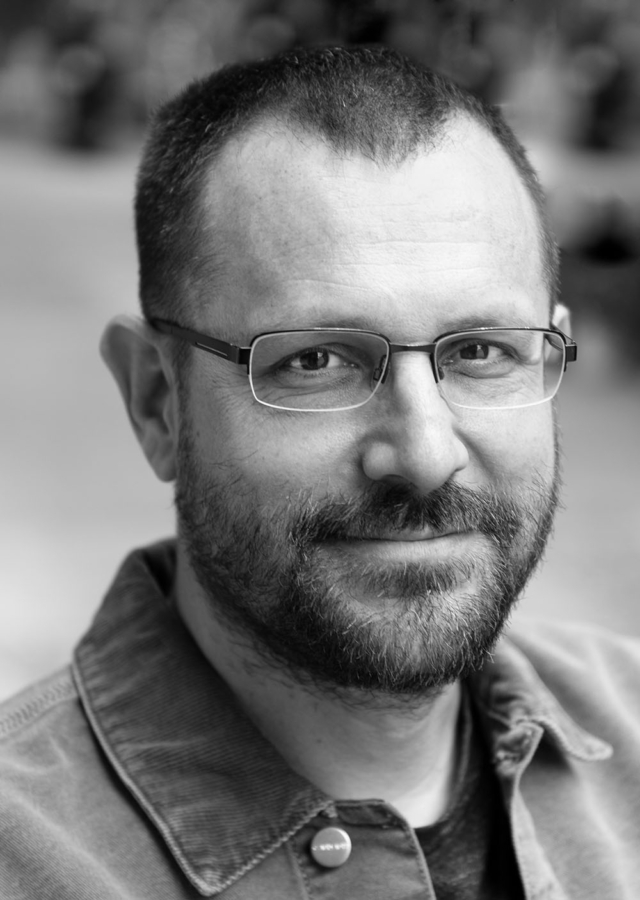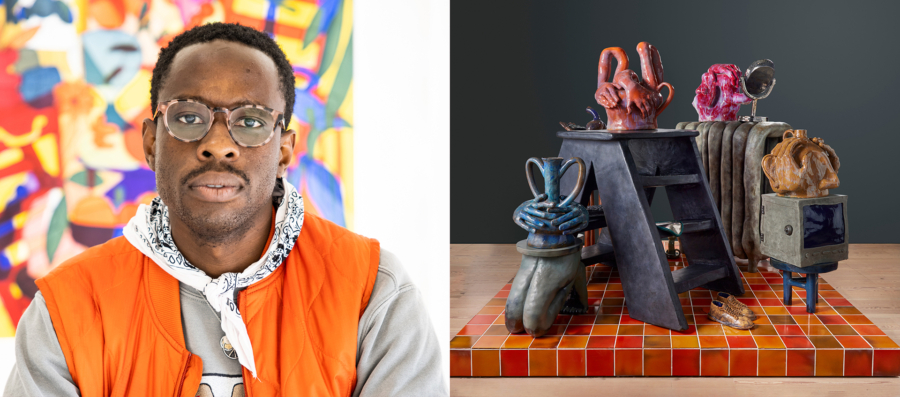Dike Blair Gouaches, published by Karma, New York, 2015.
Download as PDF
Dike Blair Gouaches is available here
Dike Blair began to paint gouaches in the early 1980s when the East Village gallery scene was just starting to catch its brief fire. They emerged on holiday out on Shelter Island, a Fifties-like escape place set into the ‘Y’ at the end of Long Island where he (and I) spent several summers. Their basic subject was the place and the holiday atmosphere. He did them on little blocks of Arches paper, usually after a swim or bike ride and before cocktails. Loose, blotchy, impressionistic, and colorful, he painted them outside, inside, eventually setting them in the chunky, painted wood frames he built himself. Some were offered as gifts or traded with friends. He wasn’t then thinking of showing them. But positive reception made them appropriate for East Village galleries, where a buyer wasn’t necessarily a Brahmin “collector” from the upper reaches of the contemporary art world.
The gouaches began as a side game to his studio work, which for years combined varieties of shaped forms and painted surfaces. He painted on the back of vertical or rectangular glass panels, using toxic glues and sprays, and oil paint to construct a unified image. Later he chose a square format, mounting a single photograph on the back, which he inset or overlaid with a second image. Next were sculptures in the scale and dimension of home furnishings, which brought together sections of carpet, varieties of lamps, wall-mounted Plexiglas light boxes that had colored gels on the inside and a photographic transparency mounted on the outside. These sculptures were linked together by long electrical cables, which were a part of the piece, arrayed in loops on the floor, sometimes in a color like orange. These works were distantly reminiscent of Anthony Caro, Keith Sonnier, and Vito Acconci’s sculptural works, but organized in the variable style of a Japanese Ikebana flower arrangement, with a light, an image, and an object instead of three flowers. Each had a poetic title like spring snow melts easily (1999) or some of (2001).
By the early aughts, furniture-scaled sculptures and small gouaches divided his time in the studio. Both were Zen-like and contemplative, combining careful seeing, a bricoleur’s tactile yen for materials, and a designer’s sense of organization. These works would also determine the kinds of photographs he would shoot and the subjects he would develop.
Dike is a pretty good photographer, and the photographic process became instrumental to his development, though he’s never exhibited them (other than in magazines like Purple, where he was an associate editor at the magazine’s inception in 1992, and I’ve been an editor since 1995). He prefers their reproduction, in the sculptures and gouaches. The photographs are often from travels for work or holidays; some have been shot on dedicated driving trips outside Manhattan, where he lives. Their subjects have included beverages (coffee and alcohol), cigarette packs, ashtrays, paperback books, suburbs at night, shrubbery, views from the driver’s seat, Southwestern wind generators, Disney’s EPCOT Center in Florida, motel balconies, mirrors, night club strippers, and single eyes. His two forays into “the figure” began with topless dancers, then later with an ongoing series of single eyes of women, slightly larger than life, centered on a larger sheet of paper. The painted eyes quite literally engaged the visual aesthetic that dominated his work—an aesthetic that combines photographic representation and the theatrical space that Michael Fried claimed, in an essay in Artforum in 1967 called “Art and Objecthood,” was the problem with Minimalist art, then a new term.
To Dike’s generation Minimalist art did indeed occupy space without presenting a semblance of illusion or metaphysical meaning, which Fried found fault with but later generations didn’t, perhaps because the space they inhabited was starting to become virtual and telemetric, heading as it was toward the glass-glass world of screens, which we remembered from Dick Tracy’s wrist communicator, in the comics we read as kids. Now we all carry them—fiction invents fact—with theater and screens now combined in Facebook and YouTube. Dike aesthetically processed this evolution.
However, the making of each life-resembling gouache required deft facility and a Zen-like mix of concentration and patience. Not long after he began to show them, the looseness veered toward photographic realism. Convincing portrayals at that juncture demanded an increasing supply of ingredients: colored pencils, sprays, erasers; painter’s tape that doesn’t rip the paper; and the necessary creative techniques for painting blue sky, smudged floors, wood surfaces, glass, reflections, and so on. He’s well versed in the Photorealist painting technique of gridding canvases into sections, projecting images, and painting a single color first, say blue or brown, then filling in the grids with color. Dike projects images, draws outlines in blue pencil, without gridding it off, then looks for ways to make a convincing representation for each detail. Gouache is matte, not shiny. Dike’s velvet surfaces are very different from the paintings of an artist like Malcolm Morley, who could incarnate the glow, shine, and reflection of photographic surfaces. Gouache colors don’t reflect, and occupy a lower in the hierarchy of representation than paintings on canvas. Dike photographs subjects to paint; in their frames; some even look like photographs. Almost.
Looking at art leads one to calibrate degrees of effort against the power of effect. Everyone does that, consciously or not, whether at work, looking at sport, staring at art, or enjoying vacation. Most everything in life can be gauged in the relationship of effort vs. effect—which is often termed ambition vs. success. Most of life arises from long-established unconscious process—the things that make up our lives. Artists slow down such thinking when making art. Sometimes the effect of talent and presentation is enough (for which Rauschenberg, Elvis, and Warhol were geniuses). Sometimes effort amazes (Marina Abramovic and Tom Friedman come to mind). Dike paints highly stylized recognizable contemporary subjects of his choosing, on paper, using gouache, and imbuing them with a cinematic or photographic light—often captured using a flash or artificial light. He sets each one in a white wood frame, which he is very particular about—paying for them himself. Such an effort adds to the visual seduction. But that’s only part of the picture. These friendly images are fragments from the daily spectacle in the artist’s life, much of which is like our own.
An informal education in moving images, magazines pictures, driving and listening, middle-class materiality, and substances of escape—legal and illegal—have bred genres of looking, making, and behavior that are different from the restrictive, sit-and-concentrate formality of the pre-television world’s artists and educators. This difference engendered a generation of artists, who were taught Greenbergian formalism—which favored painting but, weirdly, didn’t pay much tribute to Minimalism’s shift to sculpture or Conceptual Art’s literary aesthetic. Then the “pictures generation,” Dike included, added photography into the mix. (No one can predict the future.) We were all affected. Dike’s inchoate recognitions about images taking over words stemmed from the media-based technology and screen-based virtual reality we learned about as adults. His themes reveled in the shift from words to pictures and his subject were familiar to anyone who’s lived or vacationed in America, owned a car, gone to a casino, stayed in a motel, hung out in a strip club, flown in a plane, indulged in distraction, and maybe overindulged in escapism.
The gouaches are outtakes from a global agora visibly altered by photography, telecommunications, and satellite surveillance. But they document intimate contemporary sensation, the things we imbibe, the places we drift through in a world reconfigured for entertainment. An empty swimming pool in snow or a rainy window in Amsterdam evokes winter ballads in a minor key, a film like Fargo, cabin fever. Windows and glass imagery recall the green-glass architectures at home and in transport vehicles. Cigarettes and alcohol and coffee are the panaceas for an industrialized middle-class’s single homes, travel and leisure opportunities, and the constant driving and searching for place to park. If these representations could be associated with a belief system, it would be one based on the Darwinian transformation from the handmade to the mass produced, from Sunday’s at church to the three-day weekend, from representation to meta-representation, from the biosphere to the infosphere—a place where drugs of choice quell existential anxieties and overstimulation; a place where restorative travel and therapy guide personal salvation.
But his articulate, screen-sized paintings visually soften the discord between art and the commercial arts from which they were born—advertising, television, cinema, music, and photography. The gouaches are a kind of social biography that shows the transmogrification from reading to viewing and from mouths to eyes.
A movie and media maven, an avid reader of contemporary literature, science, and science fiction (he often listens to recorded books during the hours of repetitive image processing), Dike is a connoisseur of styles, and has a concerted distaste for anyone breaking the fourth wall between art and audience: artists should show, not tell or explain. To satisfy his own urge to tell, over the years he’s written about art and reviewed exhibitions, and interviewed the creator of the new VW Beetle, a designer at Nike, and masterminds of entertainment architecture. He also sees entertainment as a kind of bastard sublime—a mix of consumer excitement, visual ecstasy, and dreamy transcendence (our metaphysics)—and ascribes to the reality that created his aesthetically edgy postmodern art.
As long as I’ve known Dike (we met in college) he’s managed to combine personal reflection with a unique way of making art. Like it or not, his works are singularly recognizable. Curious, educated, and Epicurean, he borrowed from Post-painterly abstraction, Pop art, Minimalism, and photography, then more photography. In the past decade’s “Crate” sculptures, he’s had wooden boxes individually fabricated for each work, which he hand paints himself, and which contain, Ikebana style, a framed gouache or maybe a lamp of some sort. The crate is intended to be the transport box. But that doesn’t happen; collectors and galleries protect and preserve art. (The forces that engender art’s public preservation are far stronger than the artists who dream art into being, no matter how controlling they are themselves.)
The gouaches led him to places and subjects. He used his Guggenheim Grant money to travel to Japan. A year or so later he won the Rome prize and painted an array of (beautiful) Japanese images along with a few (equally beautiful) images from museum visits in Rome. A year or so later, he and his wife, Marie Abma, traveled to Iceland. He was looking for paintable vistas. The trip was a success, but his pictures (which he organized into a slide show along with an interesting selection of music—I still listen to the compilations he made in the past, titled “Stupid,” “(Pretty) Stupid,” “(Just Plain) Stupid,” etc.) were mostly disappointing and he painted only a few. Iceland, it turned out, was picturesque, but not pictorial. Which is a clue to his visual decision making: he conveys no metaphors or similes, and strongly engages memories in mnemonic works at a time when culture has become commercial.
He doesn’t copy photographs; he reembodies, isolates, refines, crafts, crops, and stylizes subjects that now include Japanese cuisine, windows of every variety and reflection, parking lots, floors, doorways, shower stalls, a pair of his work shoes (which he says, somewhat ironically, recall Van Gogh’s), partial views of Italian Baroque paintings, and those eyes—which are so different from the cut-out cigarette ads of women’s mouths that de Kooning pasted up to paint their bodies. De Kooning saw mouths as the central organ of human attraction and communication. Dike’s single eyes look back like the one-point-perspective of a viewfinder.
Darwin and Nietzsche made God and metaphysics redundant. Accurate portrayal, by hand, was usurped by photography. The demands of creativity changed. Gerhard Richter claimed that any painter not dealing with photography isn’t contemporary. Richter brilliantly balanced effort and effect—on canvas, and made it look easy. Dike calls his works gouaches rather than watercolors or works on paper, which is a proactive artistic choice—and maybe a form of modesty, one that doesn’t call too much attention to the effort or the compelling and complex effects he achieves so simply, with so much pictorial life in each one.
Published on the occasion of
Gouaches 1984–2015
April 10–May 8, 2015
Karma
188 East 2nd Street
New York, NY 10009
Published by
Karma, New York
Edition of 500



